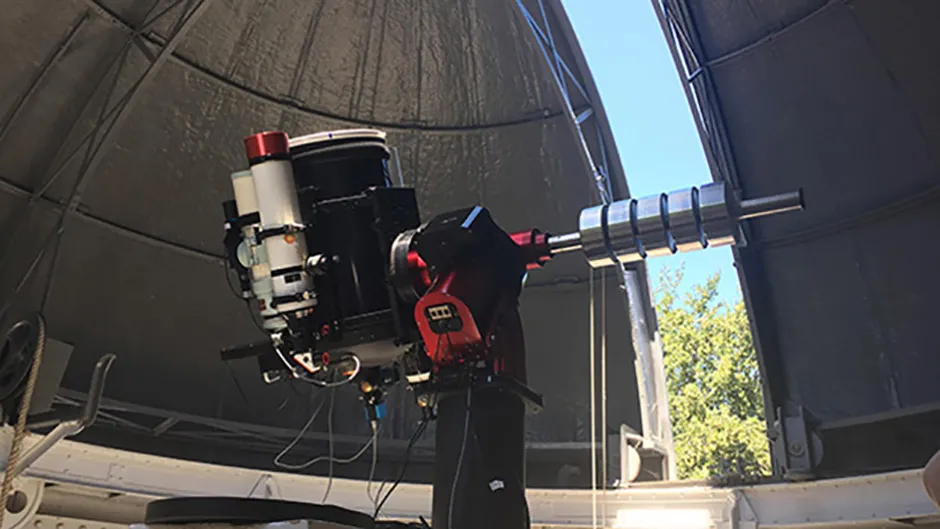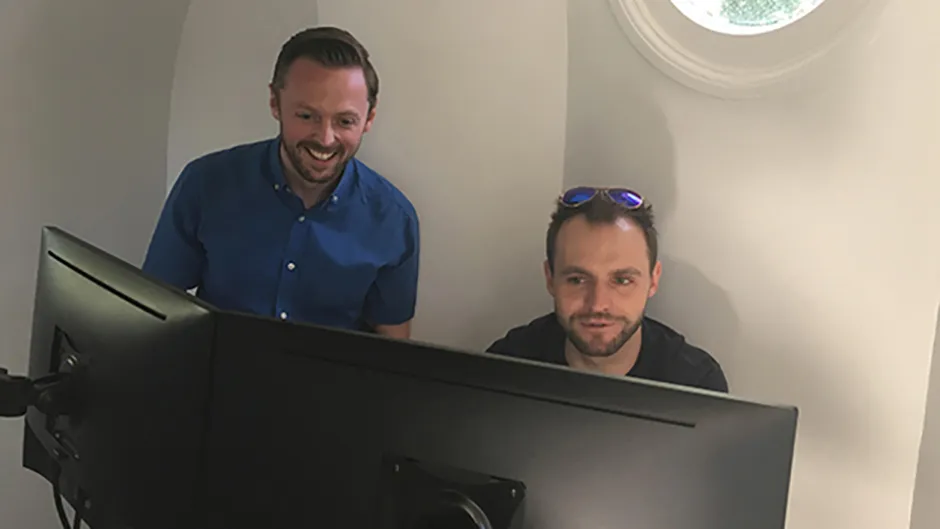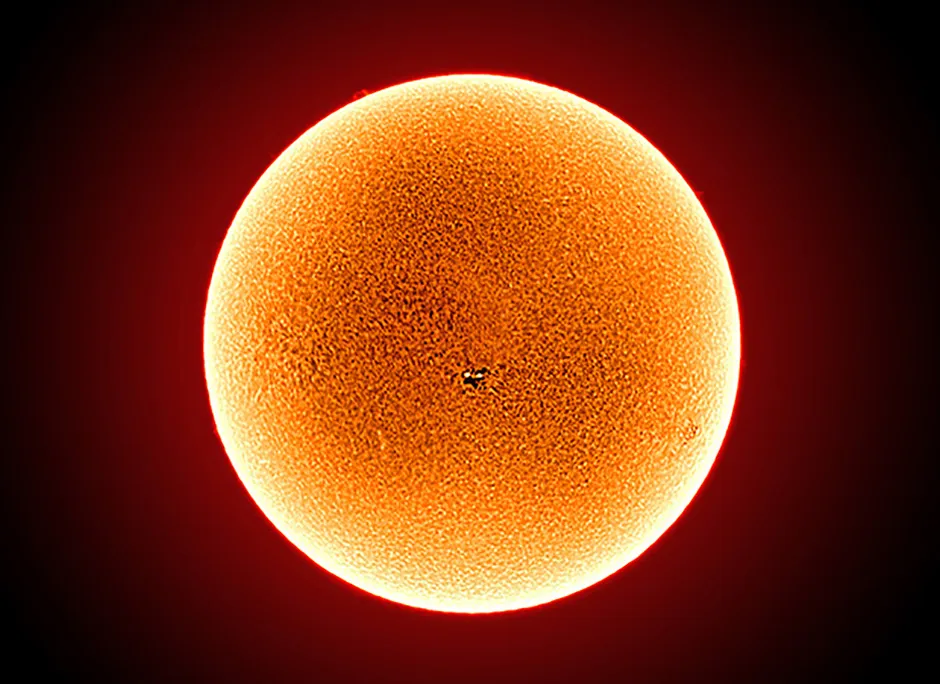A new telescope has been installed at the Royal Observatory Greenwich, restoring the observatory's status as a working institution for the first time in 60 years. Named after 'lady computer' Annie Maunder, the telescope will be used for public outreach as well as scientific research.
Over the last year, the Royal Observatory Greenwich (ROG) has fundraised £150,000 towards restoration works.
Some of this money has also been used for the installation of a diverse and modern telescope, enabling ROG to become a working observatory again, for the first time in 60 years.
The Annie Maunder Astrographic Telescope (AMAT) sits in the top floor of the Grade II-listed Altazimuth Pavilion building, which is the subject of the major restoration works taking place.
AMAT is a rather impressive piece of equipment consisting of four telescopes that will view the deep sky, the Moon, the planets and the Sun.

Brendan Owens and Tom Kerss are astronomers at the Royal Observatory Greenwich who helped bring the project to life.
“People may be surprised with what you can (observe) from Greenwich, effectively from London,” says Owens.
The short focal refractor, which is used for a wide field view, is equipped with a filter wheel that has slots for red, green and blue channels but also hydrogen alpha, sulphur dioxide and OIIIwavelengths.
These filters effectively ignore the shine of sodium vapour lamps, making astronomy possible in a light-polluted city.
Due to the weight of the telescope, the team campaigned for a very specific mount.
The mount is connected to software that allows it to automatically flex under the weight, and it is able to track transient objects in the sky such as the International Space Station.

The telescope is remotely controlled from a computer in the Altazimuth Pavilion, just a few metres away. Interestingly, there is still an 1893 Victorian equatorial telescope still in use at the ROG.
“We have to push that round to look through the finder, whereas (AMAT) is looking for objects using a sky chart, choosing an object and finding it, and then we capture it all from the computer,” explains Owens.
Who’s Annie?
Underneath the state of the art telescope, on the bottom floor, is a museum dedicated to the work of Annie Maunders (pictured left), after whom the telescope is named.
“The Maunders were really inspirational characters,” says Kerss.
“Annie was a real inspiration because there were so many challenges that she faced and yet she just overcame them all.”
Annie Maunder worked in the 19th century as a ‘lady computer’ at the Royal Observatory Greenwich, a role that involved doing supporting calculations for male scientists.
“It’s not the most inspiring job, but they (lady computers) were brilliant people,” says Kerss.
A Cambridge graduate, Annie was an intelligent mathematician and astronomer.
However, being a working woman in science at this time wasn’t an easy task.
When Annie married Walter Maunder, a famous astronomer who discovered ‘the Maunder Minimum’, she had to resign her post.
Nevertheless, she continued to volunteer right beside him as an astronomer.
In fact, although the married couple both travelled the world on solar expeditions, Annie was the one who constructed their cameras, photo telescopes and took their astrophotos.
Annie and Walter published popular books that used Annie’s astrophotography.
“They were some of the original science communicators.
People like us, we are just disciples of the Maunders,” says Kerss.
“They must have been a really happy couple, brought together by their mutual passion for astronomy.”
Because of the era in which she lived, Annie was denied any credentials for her work, so the present-day astronomers at Greenwich felt this would be the right way to remember her.
“(The name) seemed like a perfect fit: her photography, science communication, the history of the observatory and solar work,” explains Owens.

What will AMAT be used for?
The Altazimuth Pavilion will open mid-August 2018 to the public.
Although it is a listed building that only allows 12 people to view the telescope at a time, it is hoped that private tours of the telescope will be booked by the public and institutions such as universities.
Visitors will be able to take away their own images of the Sun, as a printing machine will also be installed.
The images taken from the AMAT will be displayed in the Altazimuth Pavilion via an interactive screen, as well as around the museum.
“We have a planetarium and we are hoping to bring some of the images and the data out of this building and across site and across the world if possible," says Owens.
The team have also been experimenting with live streams online and will set up live feeds so people observing via the internet can ask the astronomers questions as they view through the AMAT.
The Royal Observatory Greenwich will also set up links with universities and allow students to take their own images as part of their studies.
“It would be great if we could have … those students who normally have the data from another part of the world actually come here.
It’s more of a local observatory: you can get a sense of the history of what we have done here and also see how their data was captured,” says Owens.

Eventually, the astronomers working with the AMAT would like to collaborate with other observatories and institutions to take images of different portions of the sky and possibly even hunt exoplanets.
The telescope can also look at images using a technique called spectroscopy that involves splitting light into its constituent wavelengths.
For now, ROG is calling on volunteers who are passionate about astronomy to come and gather data and start this epic voyage.
“It will be quite exciting because everyone depending on their background will bring a different area of interest. Because there is a combination of instruments, hopefully there is something for everyone,” says Owens.
With a push for science communication in the field and the passion from the astronomers, AMAT is set to play a major role in the observatory's future.
